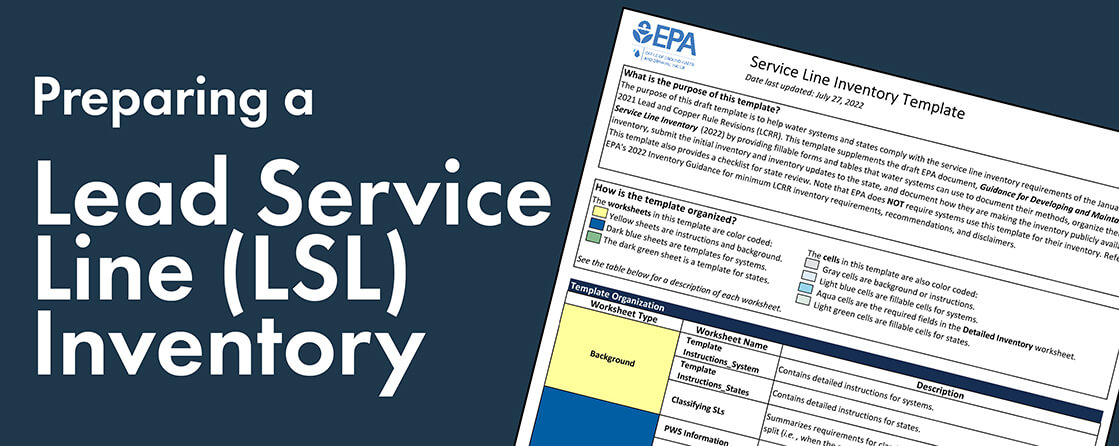
In August 2022, the EPA released additional guidance to assist utilities in performing their lead service line (LSL) inventories. The guidance, acceptable materials, and data collection outlined in these documents are aligned with Keck & Wood’s first article in this series: “What’s in Your Water Line?”
New EPA Guidance to Finding Lead Service Lines (LSL’s):
The EPA has provided additional methods of identification in their recent guidance. The most notable addition is the use of predictive analytics for developing a service line inventory.
Why is Predictive Analysis Important?
Predictive analytics uses computer modeling and existing available data to identify patterns in datasets using algorithms and artificial intelligence. As it pertains to your LSL inventory, a predictive model could use geospatially (GIS) referenced data to make predictions on what the service line material may be in a select geographic area.
The intent of predictive analytics in this application is to provide a probability score for the likelihood of a lead service lines in the area modeled. If there is minimal documentation or limited resources for field investigations, the data gained from this probability score can narrow down the geographic area which will most likely require additional research to uncover lead service lines.
The primary application for predictive analytics is to provide a likelihood score for the presence of LSL’s which will further inform and prioritize field investigations. However, a state authority can issue an approval for a utility to utilize a predictive model as a primary basis for LSL classification based on the specific model used and the utility’s specific needs.
Preparing the LSL Inventory for the EPA
In addition to the guidance document, the EPA also released a template which can be used by utilities to document their Lead Service Line inventory. The template file contains forms for background information and data collection methods, as well as a comprehensive inventory template. It is important to note that the template issued by the EPA contains additional fields which may not be required for all utilities to complete. Not knowing can trigger additional, unnecessary work. Therefore, utilities should understand the state requirements prior to submission.
Keck & Wood has offices across the Southeast who can assist in reviewing the template and map out a strategy on how best to complete the work in order to meet state specific requirements regarding the lead and copper rule.
Post Submittal – What Happens to the Information?
Once the LSL inventory has been completed, all utilities are required to have their inventory available to the public after submission to the state authority. Requirements for how the inventory is made public will vary depending on the number of customers served by your utility.
- Large (>50,000 customers) utilities are required to have the inventory available on-line.
- Small (<10,000 customers) and Medium (>10,000 to <50,000 customers) utilities are not required to have the inventory on-line. Utilities can provide access of the information at town halls, website, utility office(s), etc.
Customers with identified LSLs in the final inventory have to be notified within 30 days of the publishing date. However, it is recommended by Keck and Wood that utilities of all sizes make their inventories accessible to the greatest extent possible, regardless of less stringent requirements for smaller utilities. As professional engineers and consultants, we are well versed in these updates issued by the EPA, and this article will provide specific highlights to assist with planning your LSL inventory efforts.
“As we work with clients to build their LSL inventories, we realize there is a lot of information contained within the paper- based records to build out a large portion of the inventory. Taking the time to work through install, repair billing receipts and other documents saves time and costs uncovering lines in the field.”
– Mike Moffitt, PE – SVP Utilities

Additional Questions? Please Contact Our Experts:
Utilities Practice Leaders:
Corinne Valentine, PE – Market Leader – Utilities Practice
Jamie Brenton, PE – AVP Utilities Practice
Article Authors:
Eric Vogt, PE – Project Manager | Utilities
Austin Lewandowski, PE – Project Manager | Utilities






Leave A Comment